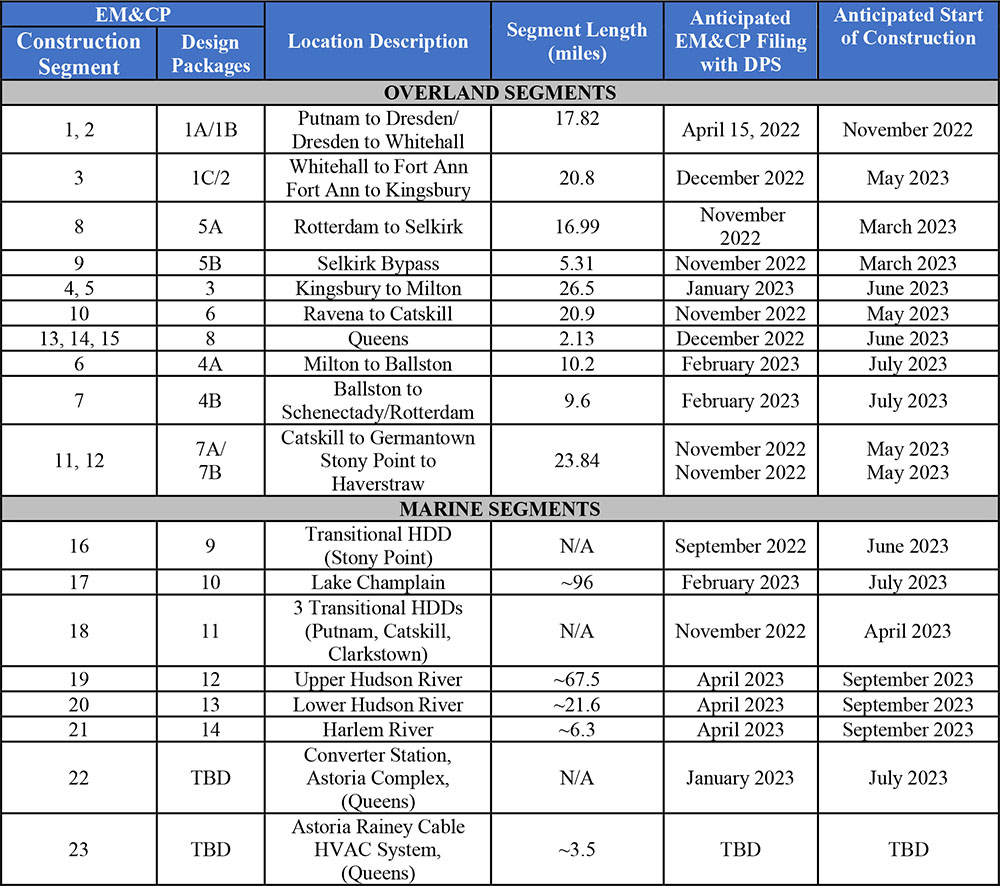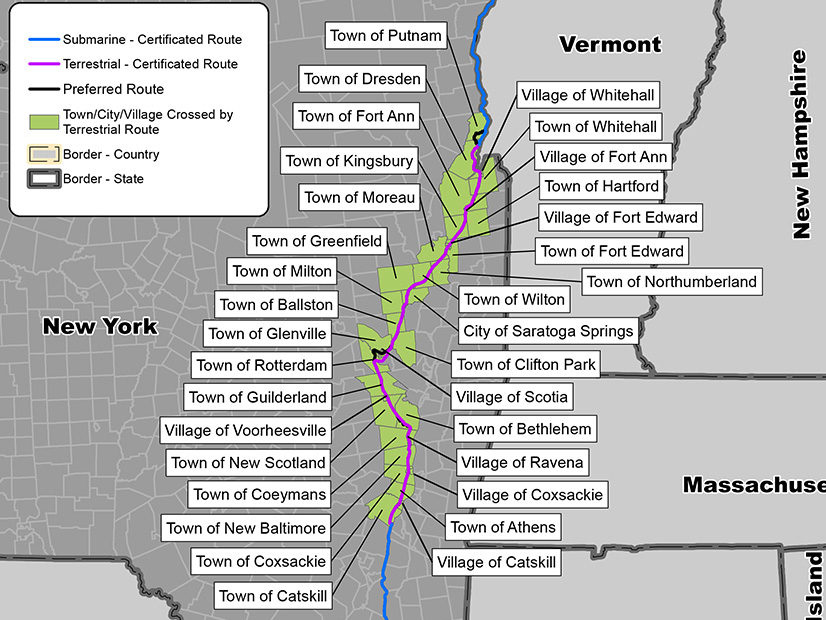The New York Department of Public Service on Monday authorized the Champlain Hudson Power Express (CHPE) to begin construction on the line, which will deliver Canadian hydropower to New York City (10-T-0139).
DPS approved the CHPE’s revised Environmental Management and Construction Plan (EM&CP) for Segments 1 and 2 after determining they complied with the state’s conditions, including facility design and maintenance plans, environmental and agricultural controls, and construction coordination.
Segment 1 covers the installation of conduit and cables spanning approximately 7.4 miles from the western shore of Lake Champlain in Putnam Station along County Route 3 and Lake Road to its intersection with State Route 22, while Segment 2 covers approximately 10.2 miles starting at the end of Segment 1 and following Route 22 until arriving at Bellamy Street, where it will connect to Segment 3.
The entire 339-mile CHPE high voltage direct current (HVDC) 1,250-MW transmission line will deliver hydropower from Montreal, Quebec, to Astoria, Queens. (See Champlain Hudson Power Express Closes on Financing.)

Both the CHPE and the Clean Path New York are Tier 4 transmission projects, intended to increase the penetration of renewable energy into New York City, which relies heavily on fossil fuels.
NYISO’s 2022 Reliability Needs Assessment highlighted the importance of completing Tier 4 projects like the CHPE noting significant delays could mean emissions-producing peaker plants may need to remain operational longer than expected to ensure resource adequacy margins and grid reliability are maintained. The project is four months behind the November 2022 construction start date presented in the EM&CP. (See NYISO RNA Raises Concerns over Timing of Peaker Unit Retirements.)
The New York State Energy Research and Development Authority, which issued the solicitation that resulted in the CHPE’s selection, told RTO Insider the agency “is excited to see the Champlain Hudson Power Express (CHPE) start construction efforts in earnest, after the groundbreaking last fall and the creation of laydown yards along initial portions of the route.”
Transmission Developers Inc. (TDI), which is developing the CHPE, called it “a unique and incredibly complex construction project resulting in an equally complex review process.”
Jennifer Laird-White, TDI’s vice president of external affairs, told RTO Insider that as the CHPE “advances and both the state regulatory agencies and the world-class CHPE construction team adjust, the EM&CP pace will quicken.”
“The CHPE team is aware of our importance in the state’s nation-leading Climate Act goals, and we look forward to helping New York meet them,” Laird-White said via email.



